Northern Xinjiang is famous for its breathtaking scenery, while the southern part of the region is better known for its vibrant culture. Kashgar best epitomizes this cultural appeal of southern Xinjiang. This city of 2,000 years has long attracted global attention for its significance in studies of China’s ancient Silk Road, rich variety of cultural heritage, distinctive Uygur architecture, and booming modernity. It is an intricately interwoven tapestry of the past and the present. The following images offer people a glimpse of the daily life, streetscapes, foods, and customs of this diverse city where multiple ethnic groups live side by side, creating its unique identity.

Two brothers playing in an alley of Kashgar, enjoying the slower pace of life in this ancient city. Photos by Yu Xiangjun
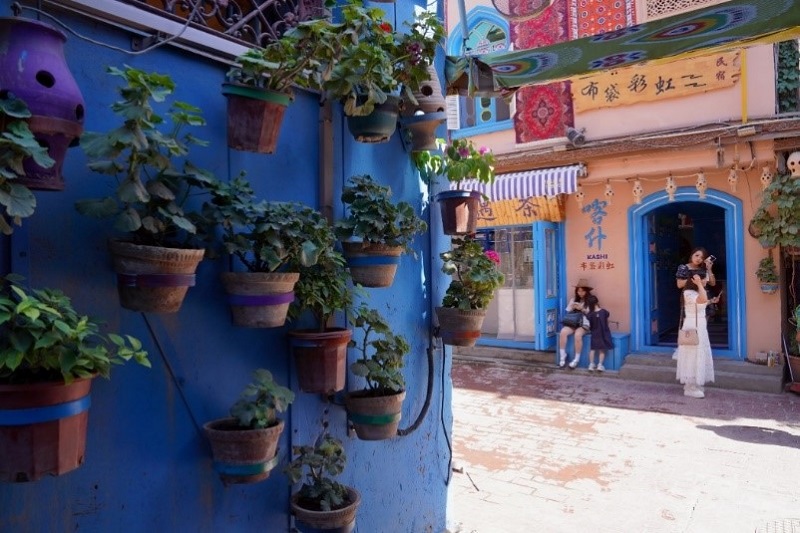
Rainbow Lane is lined by exotic buildings painted with colorful graffiti of various themes.
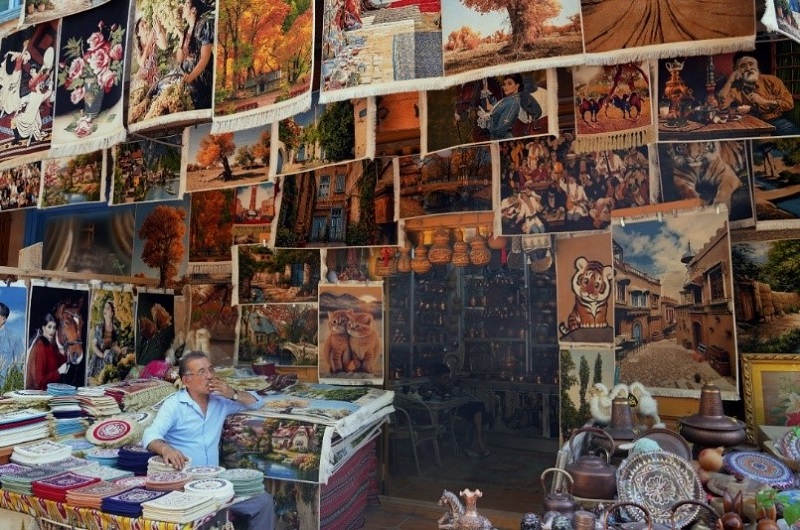
Tapestries of various patterns for sale decorate the wall of an art shop.

A blacksmith uses traditional techniques to make handcrafts. Such workshops that sell wood carvings, bronze wares, or blankets are a common scene across the city.

Boys are playing games on mobile phones during their summer vacation.
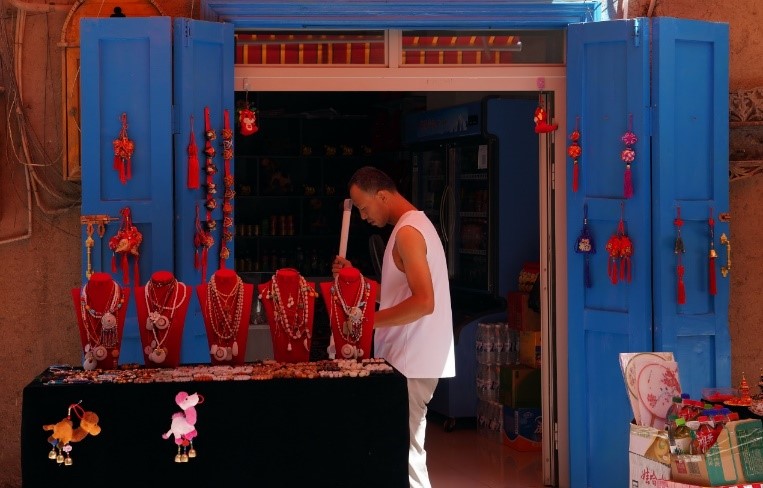
In addition to daily necessities, the grocery store sells fine jewelry and pendants. Such small objects are good choices as gifts from an ancient city.
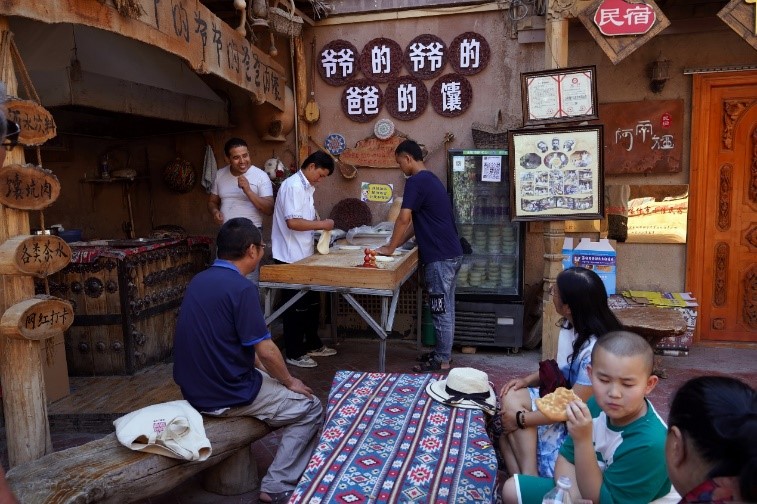
Tourists enjoy eating Xinjiang naan (a kind of crusty pancake) in a century-old store in Kashgar, and the owner is the seventh-generation naan baker of the family.
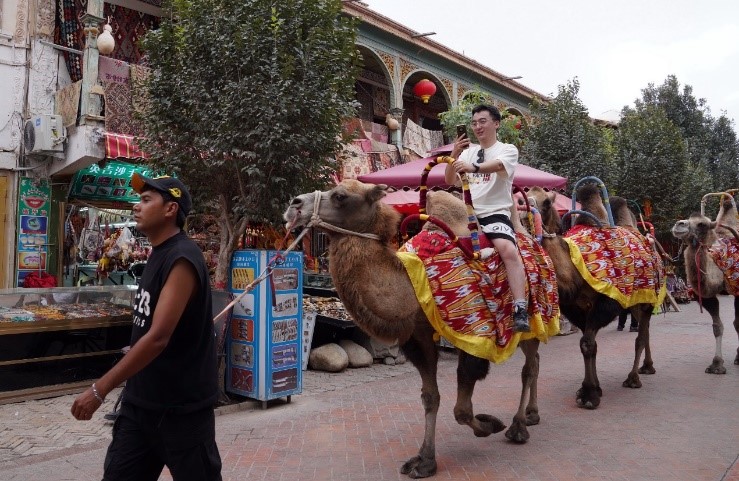
Wandering about the streets on camels creates a unique scene in the ancient city.
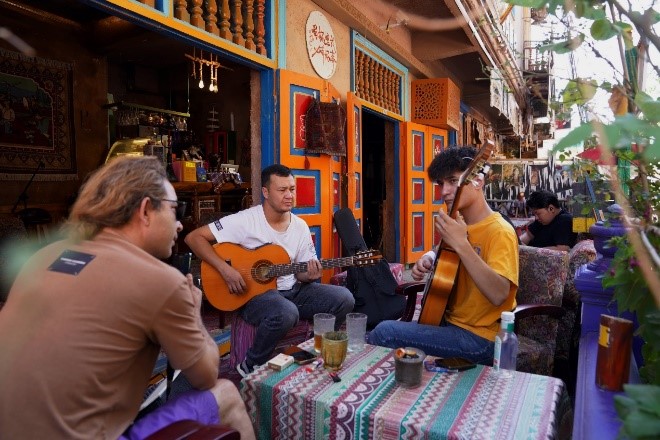
Music lovers are playing guitars in a local café, exhibiting yet another way locals spend their leisure time in the ancient city.
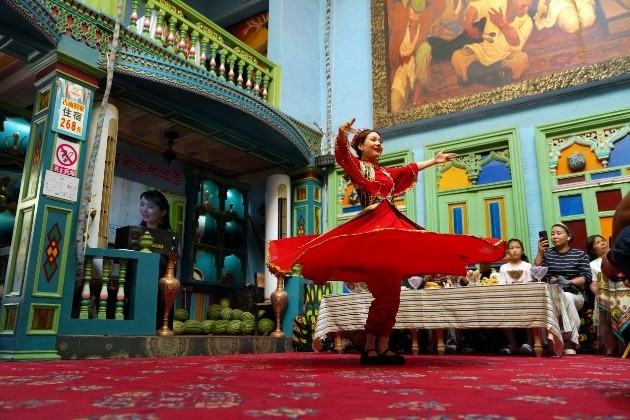
Guli's Home is the first homestay in Kashgar that opened to the public. Here people can not only eat local delicacies, but also watch ebullient Xinjiang dance performances, enjoying an edible and beautiful visual feast.
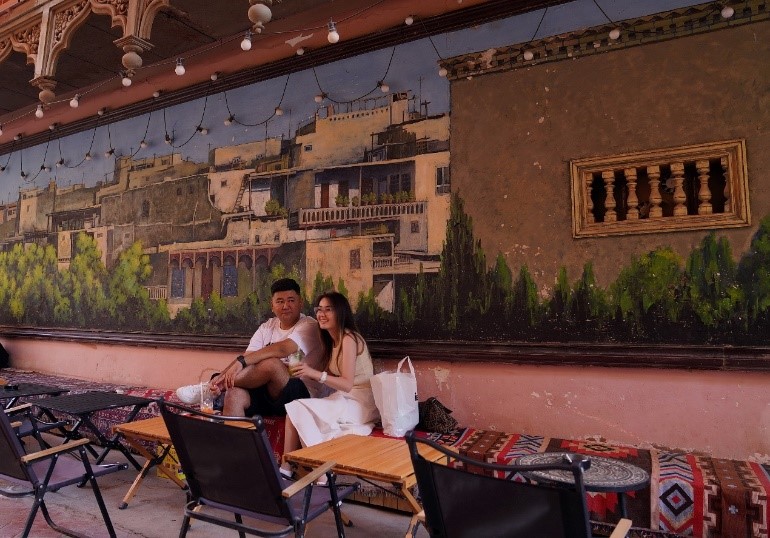
A couple is enjoying leisure time in an open-air teahouse decorated with oil paintings of local folk houses.

The Dili & Diya Café in a winding alley in Karshgar attracts many tourists to taste its array of delicacies.
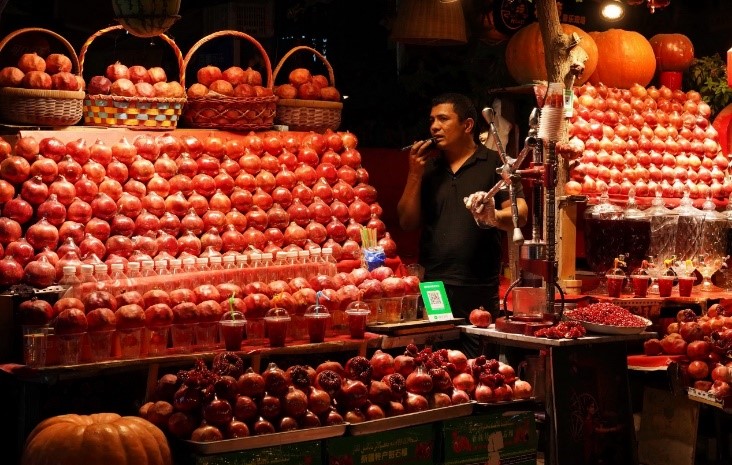
Fresh pomegranate juice can be seen everywhere in local night markets. The ancient city of Kashgar has a history of at least 1,600 years for planting pomegranates. According to ancient records, pomegranate seeds were brought to China by the Chinese envoy Zhang Qian from his mission to the Western Regions (today’s central Asia) two thousand years ago, which were then planted here. Pomegranate juice, with its refreshing, sweet taste and low price, has become a popular local drink.
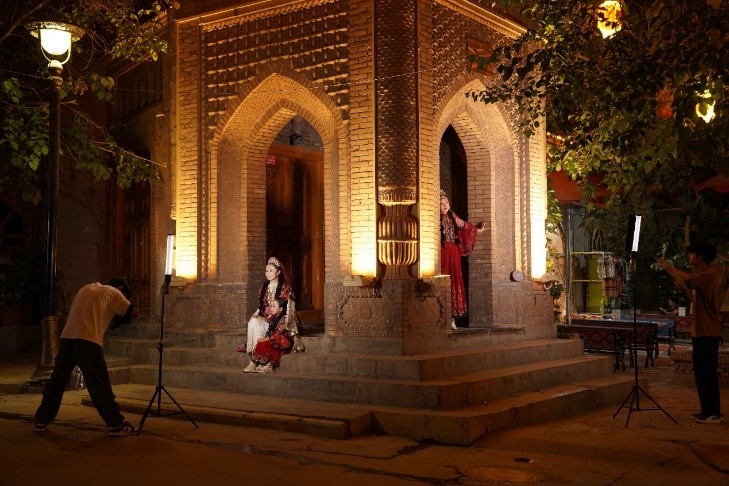
The ancient city of Kashgar has built 13 popular places for social media influencers’ check-ins, being increasingly sought after by tourists. There are now more than 160 travel photo shops in the ancient city, providing tourists with a better immersive experience.
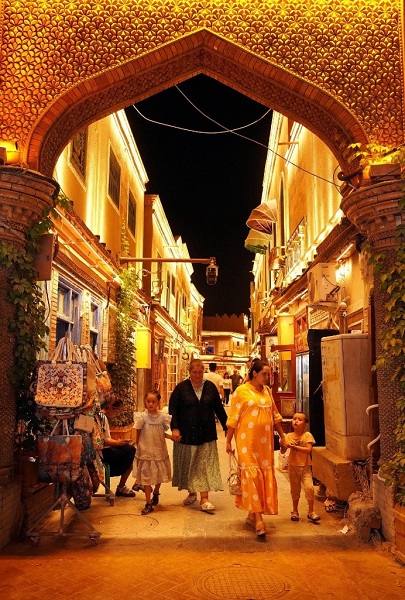
As night falls, the ancient city of Kashgar takes on another charming appearance. In a dimly lit alley, ancient buildings appear even more mysterious and solemn.
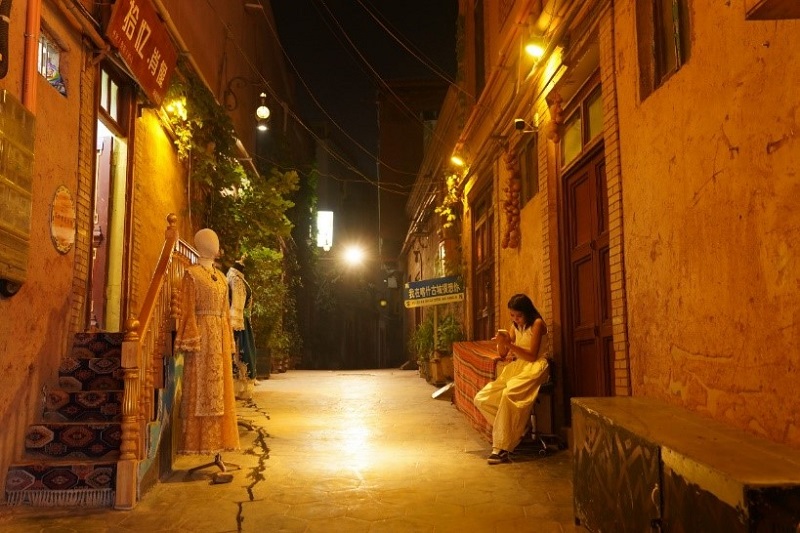
During the late night, the empty, quiet streets and alleys across the ancient city reveal delicate and peaceful vibes. As the sun rises announcing the arrival of another day, the ancient city welcomes the next round of hustle and bustle, repeating the endless routine of the previous day.
The ancient yet vibrant city of Kashgar interprets in its own unique way the meaning of “keeping pace with the times.” Here, people not only preserve their reverence and inheritance of traditional culture, but also actively embrace the conveniences and diversity of modern life. Between day and night, the city is filled with profundity and vitality, weaving together a stunning tapestry of time, culture, and life.